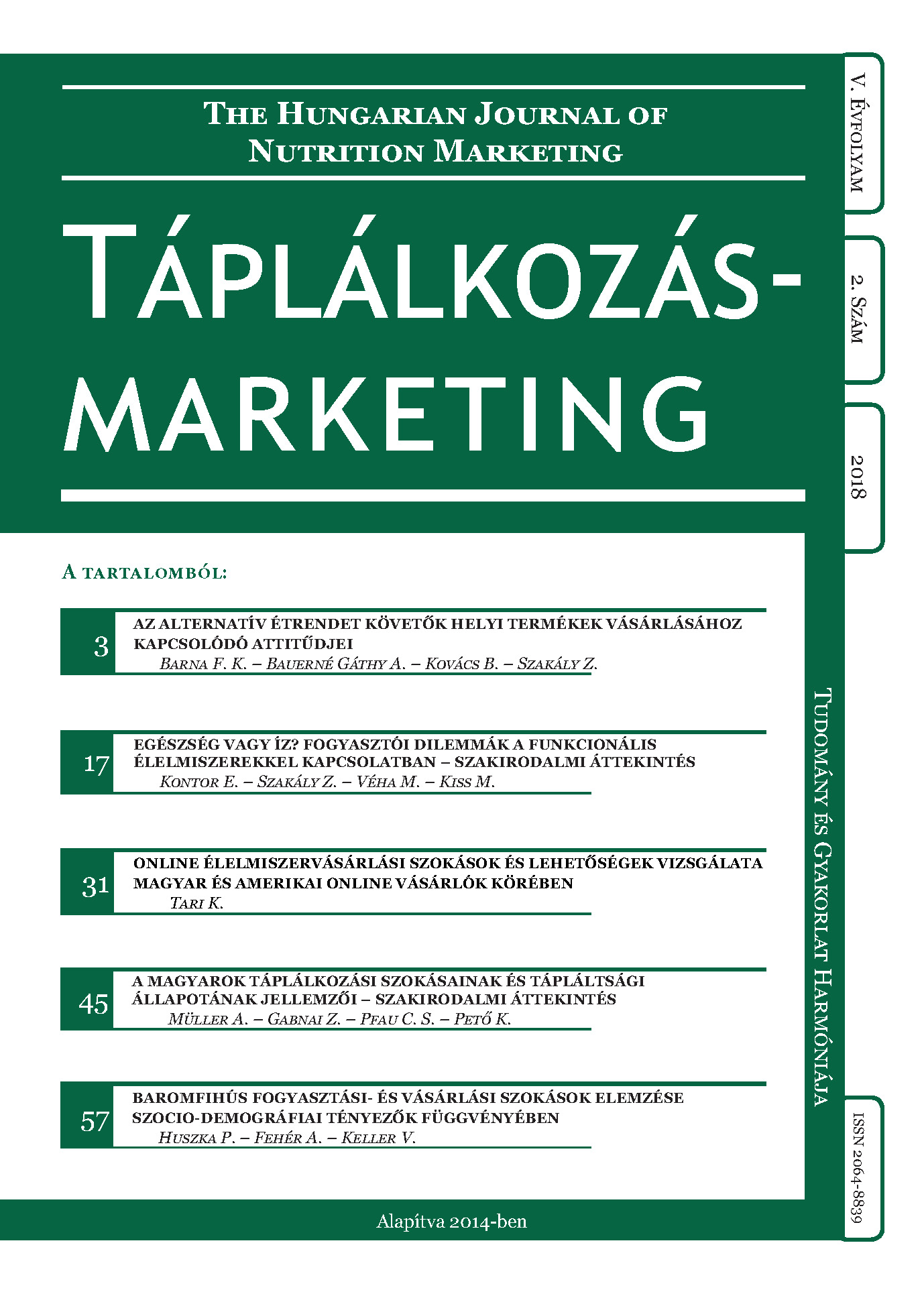Health or Taste? Consumer Dilemmas with Functional Foods – Literature Review
Authors
View
Keywords
License
Copyright (c) 2018 Táplálkozásmarketing

This work is licensed under a Creative Commons Attribution-NoDerivatives 4.0 International License.
How To Cite
Abstract
The current study of our two-part paper series is dealing with one of the most important attitude influences on functional food consumer behaviour. Namely, it focuses on “health effects vs. taste” attitude factor of functional food products, which describes the possible conflict between a pleasant taste and the health benefit of the product. This factor is analysed on the basis of two aspects of factors influencing food choice: internal (food) effects (e.g. sensory aspects) and external (non-food) effects (e.g. psychological, social, cultural factors). The most important internal (or intrinsic) characteristic is the taste of the food product. A remarkable finding of this study is that good taste is a crucial, self-relevant characteristic of any food product and bad taste would not be accepted in functional food products either. Consumers are hardly willing to compromise on the taste of functional food products for potential health benefits. Another aspect in the case of functional food products is that intrinsic product characteristics are given by the combination of the health-enhancing ingredient with the type of carrier product used. Studies have shown that functional ingredients that weaken the taste of such food products reduce their acceptance. There is a consensus in the literature that a natural match between added ingredient and carrier product increases the overall acceptance of functional food products. External (or extrinsic) characteristics, e.g. psychological and lifestyle factors, and socio-cultural differences provide further aspects of the potential conflict of “health effects vs. taste”. From a psychological point of view, one may assume that an individual who chooses a functional food is committed to the products’ benefits and may be willing to accept some unpleasant taste in order to achieve the desired health benefit. It has to be noted, however, that although the importance of a given health benefit may lead to the acceptance of an unpleasant taste, this acceptance is not necessarily supported by each of the health benefits. Lifestyle variables also influence the acceptance of functional foods, e.g. wellness-oriented consumers appear to be more willing to trade the taste for health benefits. However, the segment of consumers who are ready to sacrifice the taste for potential health benefits cannot be identified by using classical demographic characteristics as segmentation variables. The “health effects vs. taste” conflict is influenced by cultural differences, too. E.g. the priority of taste can be observed in whole Europe; in contrast, the preference for nutritional benefits is rather typical in the Asian countries. The final conclusion of our study is similar to that of the literature. Good taste and healthiness are not necessarily to be traded-off against each other. Hoping for consumer willingness to compromise on the taste for health is highly speculative and risky, so the functional food industry must develop good taste solutions. In addition to sensory perception of the food, the expectations have also been found to have an impact on the acceptance of functional food products. Consumers’ expectations are highly influenced by marketing communications. In case of functional food products marketing communication is strongly based on health-related information and this information influences not only the perception of healthiness but the liking of foods, too. Hence, additional values of functional food products (health+convenience+pleasure) have to be communicated as hedonic values, emphasizing especially the role of pleasure.
JEL codes: D11, M31


 https://doi.org/10.20494/TM/5/2/2
https://doi.org/10.20494/TM/5/2/2





